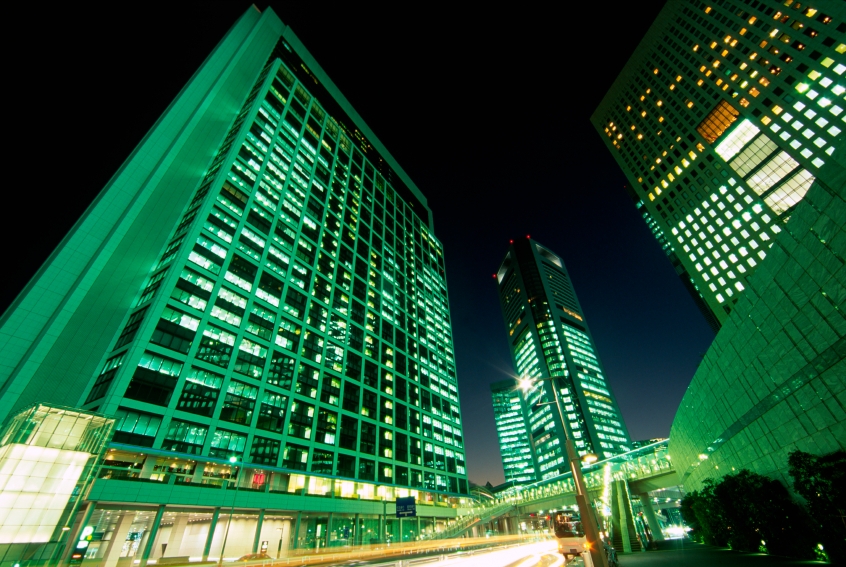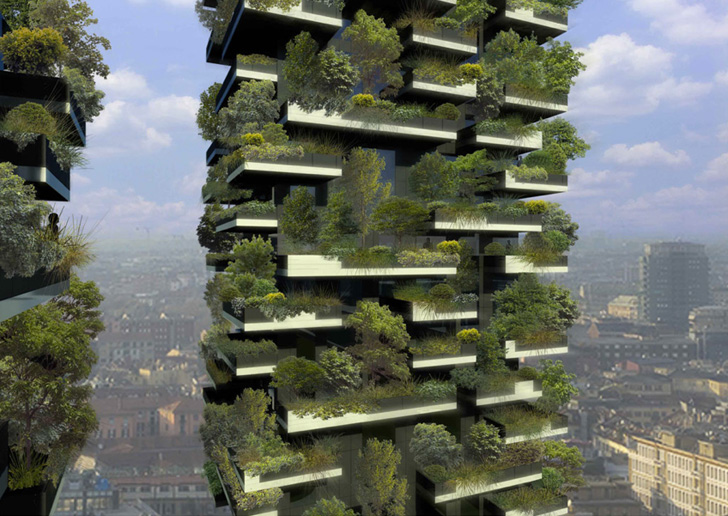We've pretty much established that trees are awesome — they make you smart, improve your home's value, filter pollution, provide shade, and produce oxygen. But even in a city that prioritizes green spaces, surface area is at a premium. How do you provide enough trees while still living densely? Milan, Italy, has a creative answer: a forest in the form of a skyscraper.
The Bosco Verticale takes the same attitude towards green space that highrises take towards living: You can fit more into a smaller footprint if you build up instead of out. It's an apartment building, but each apartment has a balcony with its own little mini-forest. These provide the pollution-filtering benefits of plant life and the energy-saving benefits of shade, but in a small area; Bosco Verticale's architects estimate that if the same amount of vegetation were laid out flat, it would require 10,000 square meters of woodland (plus another 50,000 meters of land for the living spaces). And kitting out the building with personal forests added only 5 percent to construction costs.



